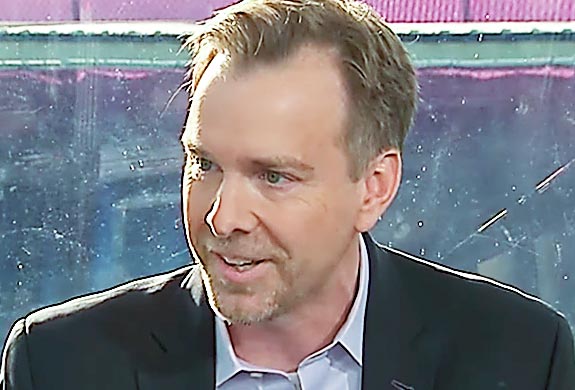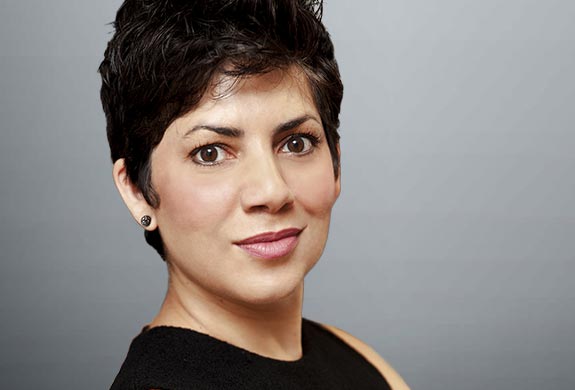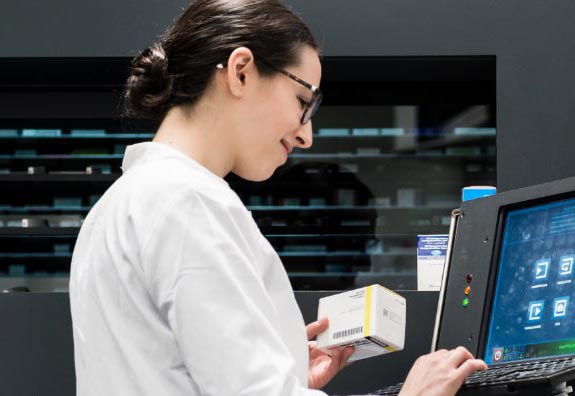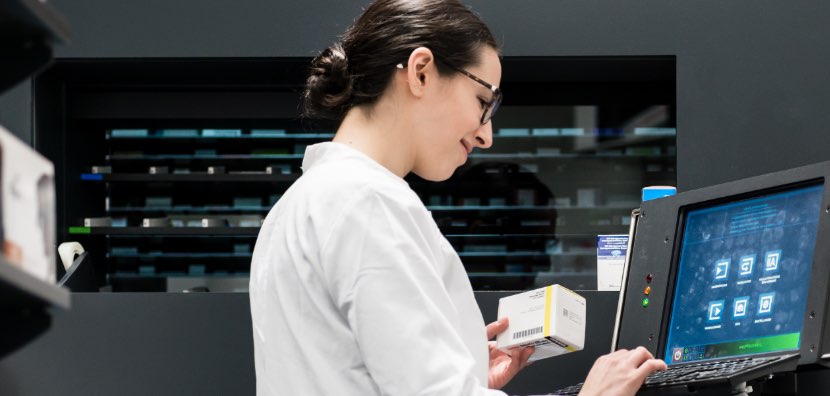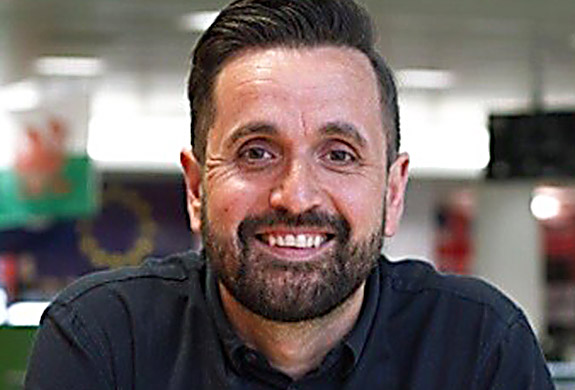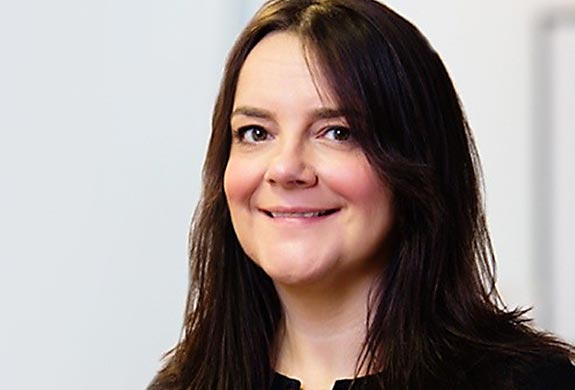A team for all seasons: Building and managing multi-disciplinary groups

The fast-paced, customer-centric, new world of marketing is here. The only constant? It’s constantly evolving.
If marketing and the role of the CMO (chief marketing officer) is constantly evolving then the team and business they surround themselves with must too.
The right mix of skills can drive agility in process and innovation adoption, and bring your business to life.
The CMO as the heart of a future-facing business
“Marketing has moved from being a small function to being much more about leading the business. There’s been more transformation in marketing over the last five years than the last fifty.”
John Watton, CMO, Adobe
Today, the skills required to deliver ultra-relevant customer experiences include data science, technology, design, strategy, financial expertise, qualitative research, market analytics, product expertise and more. Creativity and storytelling through technology will be required like never before, as marketers craft seamless and exciting experiences in-store and across devices. Copywriters are needed for technologies like chatbots and other automated customer interfaces. Analysts need to work with data and finance to understand customer profiles and drive sales.
This is potentially a huge number of people across a variety of teams who need to come together to deliver, and each of these skills requires cross-departmental collaboration like never before.
“The collaboration between the other functions is much more important than it has been in the past,” says Karen Snell, head of industry sector marketing & business development at Hogan Lovells, “The CMO, the chief people officer, the chief technology officer, and the chief knowledge officer are all working really well together to develop solutions for the business. We've not really seen that before.”
But change can bring challenges, says Abbie Walsh, managing director of Fjord. “It is important to recognize rapid change can trigger anxiety in your team members,” she says. “The answer lies in involving people in the process so that they feel understood and valued, they know what’s coming, they feel trusted, they appreciate why change is necessary, and they have a sense of doing it together as a team.”
The CMO as a key customer advocate can really work to drive change and unify all areas of the business towards that same, customer-focused goal which will in turn help grow the business.
Building a team with empathy
The new marketing team should be a vibrant, diverse mix, but alongside all these crucial skills, the team must have real empathy for their customers. This is where data can really help. A future-facing team should dig deep into these insights — becoming customer-obsessed, dedicated to delivering the customer what they need.
Greg Lyons, CMO of PepsiCo North America Beverages, puts it this way: “It’s about data, but also empathy. Now there's so much more data than we've ever had before. So it's a real balance today of understanding the consumer both with your heart, which you still need to do, but also leveraging all of this incredible data.”
It’s critical to create a working environment where fresh talent and experienced employees work together, and recognize where agencies, freelancers and partners can bring new skills to the mix to quickly and efficiently produce cutting-edge work.

The CMO is leading transformation
“Don’t become an expert in a different discipline; become an expert in surrounding yourself with dedicated experts.”
Glen Hartman, managing director - North America, Accenture Interactive
If the role of the CMO within this business has changed, and the team around them needs to change too, what are the new skills required of this future CMO?
“Just being a good marketer is not enough” says Snell of Hogan Lovells, “I think you’re going to have fantastic financial management skills, fantastic people leadership skills, (and) you’re going to have to understand technology.”
As a customer expert, the CMO has become indispensable to the success of their organization. CMOs have a new opportunity to influence and drive business, and ensure the brand’s purpose is met with total synergy across the company.
Stuart Spencer, CMO of AIA, says that the new CMO is an expert at transformation. “They need to be somebody who can transform cultures, brands, organizations, and mindsets,” he says. “Somebody who can inspire across generations of consumers and generations of employees. Somebody who has an intuitive sense of how to connect individually with consumers and employees, and be someone people want to get close to. Somebody who is engaging, accessible and available.”
The new CMO must be all these things but at the heart: a customer advocate and a champion for change. The new CMO sits at the heart of what Accenture calls a Living Business — a company full of life and agility — and runs a team that quickly learns, decides, and continuously responds to ever-evolving customer needs.


The role of chief marketer is unrecognizable from 20 years ago.
The need to focus on driving revenue while staying customer centric at the same time is still crucial, but with the introduction of Chief Growth Officers over CMOs in many companies like Coca-Cola and McDonalds, the CMO of the future may not even be a CMO.
“A CMO absolutely needs a growth mindset these days - I don’t think that’s that much different than it used to be. The emphasis on growth in my job and the best ways to accomplish this, including where we put resources and what we focus on, is what I spend a lot of my time on. The customer landscape is changing too. How you interact with your customers and develop programming that really works with their shoppers is significantly more advanced than it used to be. And it’s going to continue to change as technology and the customer landscape evolves.”
“I really feel that personal engagement is super important. What technology enables us to do is to make sure that we're recording accurately on the touch point and that we understand how people come into our brand and how people live with our products. If I invite you to our factory, I record that and I say, ‘Okay you’ve taken a factory tour and then if you come to an F1 race with us,’ I got you there and I say, ‘Well you like F1?’
And maybe you haven't bought a car yet but I've got you now to two events so I know, and if you buy a car, I'm like, ‘Okay well, clearly whatever I've done with you on this journey has worked.’
If and when you bought a Ferrari, I'll be like, ‘What did I do wrong?’ So technology will enable me to track, sounds a bit spooky, but will enable me to understand our customer journeys.”
What is a Living Business?
Accenture call companies “Living Businesses” when they are unwaveringly customer-centric and adopt fluid models and flexible platforms and talent. A Living Business understands its customers, and adapts and innovates constantly – at speed and scale – to remain hyper-relevant. Their vitality and responsiveness to their environment enable them to evolve perpetually, just as living organisms do.
The Living Business model requires transforming and growing the core of your business as well as growing new capabilities. It’s hard work – but the business that transforms, will thrive in the new market.
Next up: There’s a mountain of martech, the blending of marketing and technology, available in 2018 and even the most technologically savvy CMO can’t be expected to know it all. How do you sort the treasure from the trash?

If you had a dollar for every time someone told you about this “hot new platform” you’d be retired by now, right?
There were over 5,400 martech products available by the end of 2017. Add this to the explosion of virtual reality, augmented reality, artificial intelligence and robotics and you have a mountain of options that even the most digital savvy CMO will find it difficult to sort through without help.
So how do you find the treasure among the trash? It goes back to: what is your company’s North Star?
Understanding what your customers want, where they are, and what is driving them to make decisions can help steer you away from something that isn’t working.
Deciding as a business what your guiding light is, your singular goal, means that all decisions should be easier to make — including your approach to evaluating and adopting technologies.
“When seeking out a new technology, app or algorithm you have to have a very clear objective, a clear customer ambition. You’ve got to have a very clear vision of what it is you want to deliver to the customer.”
Stuart Spencer, CMO, AIA
What is the problem you’re trying to solve for your customers, and what is the technology you can introduce to help with that problem?
Once you know what you want to achieve, you’ll need to survey the market to find out what’s available, what can best enhance your customers’ experience, and then seek out the right tools for the job.
Augmented reality, for example, can help a customer see what a product might look like in their home. Omnichannel marketing platforms makes the most of data to synchronize activity from all touch points — the result for the customer is a more personal experience, and it gives your business the ability to predict, sharpen and perfect knowledge of your customers.
“You need to know as a CMO about those new technologies, how can you leverage them and how do you deploy your money behind the right technologies. A CMO, in addition to being a financially savvy person, should also be technologically savvy.”
Raja Rajamannar, chief marketing and communications officer, Mastercard

Collaboration unveils synergies you might otherwise miss

Co-operation and collaboration is the name of the game for savvy CMOs. Working with new partners and peers to share insights, woes and hot tips helps keep you abreast of the industry without relying solely on your own time and leg work.
Collaboration in-house means you can use the knowledge and expertise within your organization, when everyone is focused on the same singular goal, to help you scour the martech landscape for real gems. Collaboration with partners — including start-ups and other ventures — can shed light on new approaches, new technologies and breathe new life to your strategy.
Antti Aumo, executive vice president at Invest in Finland, says partners are paramount to getting the best knowledge. “We have in-house skills plus we have key partners,” he says. “Using partners is crucial because you can never have the latest, the fullest, the complete knowledge in-house. And partners bring flexibility to that.”
Cross-department collaboration to determine wider technological compatibility is also crucially important. “We have learned the hard way,” says Karen Snell, head of industry sector marketing & business development at Hogan Lovells. “You can’t create a solution that just works for marketing. We’ve gone out and bought off-the-shelf technology solutions for marketing and then found out that they don’t comply with our security systems. It all comes back to collaboration.”
Experiment with open expectations
Experimenting with new technologies or platforms is a really great way to stay ahead of the game without committing large scale resources. Since, as customer advocate, the CMO is driving new customer experiences, their role is key to understanding how new technologies can help power those experiences.
It’s never totally clear how a technology could evolve but it’s often worth a dabble for the learnings alone. A small investment that might fail is better than hedging bets and sticking with the status quo. And if that small test pays off — it can be implemented at scale.


There was a time, a long time ago, where you could depend on television, radio and print for all your marketing needs. Today, our omni-channel world requires a robust strategy if a business is going to connect with the consumer.
With new platforms, apps and tech popping up around us, it is important to know what the business end-goals are in order to inform what martech to employ. Essentially, to Snap or not to Snap?
“Creating hyper-relevant and engaging customer experiences is the key to winning in today’s digital first world. To be successful, you need to combine the latest technology and data with world-class expertise in dynamic marketing. CMOs now need to embrace the full potential of technology to create operating models that are designed to give them a step change in efficiency and effectiveness. Being a customer centric company is no longer optional in this rapidly evolving ‘direct to consumer’ world, so on-going collaboration and experimentation with technology partners and platforms is critical to driving business growth.”
“Creating hyper-relevant and engaging customer experiences is the key to winning in today’s digital first world. To be successful, you need to combine the latest technology and data with world-class expertise in dynamic marketing. CMOs now need to embrace the full potential of technology to create operating models that are designed to give them a step change in efficiency and effectiveness. Being a customer centric company is no longer optional in this rapidly evolving ‘direct to consumer’ world, so on-going collaboration and experimentation with technology partners and platforms is critical to driving business growth.”
Next up: What does it take to satisfy your customer’s needs? In the next chapter we’ll break down how to deliver a hyper-relevant experience that is engaging, intelligently personalized, consistent, credible, and generous.
The secret to meeting your customer’s needs


Even a fraction too much friction can be a monumental turn off for today’s demanding consumer. One click too many, inflexible delivery options, or a rigid service that doesn’t allow for bespoke changes and you’ve lost them for good.
But fulfilling a customer’s needs is about more than a seamless purchasing experience. In this new era of digital-based competition and customer control, people are becoming less loyal and increasingly make purchase decisions because of a brand’s relevance to their needs in the moment.
“To succeed in this era of relevance, marketers and companies must be continuously willing to abandon the old. As new technologies shift customer journeys and expectations, they can (and should) also enhance companies’ abilities to engage with customers in the most relevant ways.”
Robert Wollan, senior managing director for Accenture Customer Strategy, Accenture Strategy.
Hyper-relevance is not just personalization, it means keeping pace with the changing needs of consumers. As those needs evolve, so must the experiences your brand delivers.
But what does this mean in practice? What will make you hyper-relevant and customer centric, and help keep those customers by your side for good?
Meeting customers’ needs
First up, you must truly know your purpose as a business. Staying authentic, and clear on your business’ core values and emulating those values through everything you do builds credibility and trust — the heart of a strong customer/brand relationship.
Once you know who you are as a brand, you need to identify your customers’ needs in the present, and also anticipate future needs so you’re one step ahead. Measuring metrics like customer engagement is a start but being hyper-relevant requires a complete change in mindset.


Five key ingredients to meet customers’ needs
Agility, trust, collaboration, empathy and personalization — these are the five ingredients that will help transform your approach as a business.
To be an agile business means being adaptive, proactively understanding and anticipating customers’ individual needs and delivering experiences that reflect this and respond accordingly. Your business, at it’s heart, should be primed for change and continuous innovation. GE is embracing agility by making the transition from 20th-century conglomerate to 21st-century “digital industrial company.” By taking people out of traditional silos and putting them in self-managed and customer-focused multidisciplinary teams, the agile approach is not only accelerating profitable growth but also helping create a new generation of multi-skilled managers.
Keeping customers at the heart of everything you do
“We strive to have empathy for the user and focus on one, real person”
Lorraine Twohill, CMO, Google
The new CMO (chief marketing officer) is critically placed as the customer advocate within the business to help deliver the engaging, intelligently personalized experience customers demand.
“We are an inherently personal business and in this age of technology and immediacy buying a luxury product should be a really engaging personal experience,” says Simon Sproule, CMO of Aston Martin. “Look at Elon Musk and Tesla. They don’t work with dealers and he controls their entire purchase experience. He owns all his stores and all the sales people are employees of Tesla. This is because he wants to give an incredible experience.”


It’s no big secret that consumer expectations are as high as they have ever been. Customers expect personalized service seemingly on-demand.
And with so many outlets and access to services around the world, it is up to businesses to meet their needs if you want to stay ahead of the curve. But how do you make sure your business stays relevant to your customers and to keep them coming back for more?
“If I pose myself as the customer of technology, and look at the web platform, the automation platforms, the Salesforce platforms, the web platforms, the paid media platforms, the social platforms, all these tools that are available to me in connected guises that will make my business more effective, will make my marketing metrics more effective, they're changing, they're getting better, they're improving on a daily, weekly, monthly basis.”
“If I pose myself as the customer of technology, and look at the web platform, the automation platforms, the Salesforce platforms, the web platforms, the paid media platforms, the social platforms, all these tools that are available to me in connected guises that will make my business more effective, will make my marketing metrics more effective, they're changing, they're getting better, they're improving on a daily, weekly, monthly basis.”
Next up: How does the new CMO navigate this customer-led, ever shifting landscape?

At digital giant Mozilla, Chief Marketing Officer Jascha Kaykas-Wolff has noticed a shift in the way marketing departments are now operating. “Many of the specific functions that sit in marketing operations used to sit in your IT department.” And the flow cuts both ways. “Over the next five years I expect many of the technologies and processes that sit in ‘agencies’ will move into new functions of marketing, operations or others, as well,” he says.
For some time, we’ve seen the lines blur between marketing and other departments. Traditional marketing functions such as product feedback and data analytics are now a small part of a wider cross-company picture. And as customers’ demands become more bespoke, marketing teams are working more closely with finance, logistics and design to respond to those needs.
“There is a greater recognition that the role of the CMO must deliver tangible, measurable, financial impact and drive the financial performance of the firm.”
Stuart Spencer, chief marketing officer, AIA
So, what’s the end game here? How does the new CMO navigate this customer-led, ever shifting landscape? It starts with understanding the new consumer.
The need for speed, ease and excellence
The original model was for marketers to sell to consumers. This relationship has changed in the digital age. Consumers are easily informed about products and expect brands to accommodate to their every whim.
Customers demand the best of the best, and they’re not even comparing like-for-like anymore. If a customer can book a hotel with one click, they expect the same from a rental car company. If they like the speed and ease of an e-commerce platform, they expect the same from their bank.


With every industry disruption, customers are turning to suppliers and demanding they measure up. This is a world of liquid expectations, where the experience of buying is as important as the quality of the product or service.
Mark Gaydos, CMO of data center services provider Nlyte Software, puts it best: “The buyer is in more control than they have ever been. All CMOs need to know that we don’t sell any more. We help people buy.”
“Culturally, at the top there has to be a significant commitment to a purpose for the company or the brand that can be authentically embraced by everyone.”
Raja Rajamannar, chief marketing and communications officer, Mastercard

A new agile approach
With customers at the wheel, businesses must realign the way their departments work together to decrease friction and create a fluid, seamless workflow. Innovation is key — fueled by customer demand and realized through a vibrant internal culture that empowers people and fosters and promotes innovation.
To remain hyper-relevant, businesses need more than skills.
Keith Alsheimer, CMO of database provider EnterpriseDB, understands the customer/supplier relationship has changed. “We have to understand our customers’ needs, communicate with them in very personalized ways, listen to their reactions, then adapt our responses to them accordingly,” he says.” It’s more like a dance really. Move, react, anticipate, then move, react, anticipate some more.”
Unlocking the tools for change
Emerging technology plays a huge role. Insurance companies use GPS trackers in cars to offer personalized insurance. Banks are adopting Open Banking protocols to offer seamless third-party services, just as music service Spotify uses APIs to connect to other products and devices, such as Amazon Alexa and the Waze traffic navigation app.
And with the adaptation of new technology comes a vast amount of data. There is a rich river of untapped data flowing through the best future-facing companies which can provide vital information on how to gain and retain customers.
Glen Hartman, managing director - North America, Accenture Interactive

CMOs need to work closely with the chief technology officer and chief information officer to collect, share, and analyze this data. Rishi Dave, CMO at financial information company Dun & Bradstreet, says, “CMOs have to start leading the charge to have an organized, structured, quality dataset across the entire company so at least the information flowing from system to system is accurate and shared across departmental silos.”
The CMO's role as customer advocate is essential in driving organizational transformation. At accounting software company Xero, there is an effort to include all staff in transformation efforts. Anne Allen, head of people experience at Xero, says, “At Xero, it’s rooted in our culture. We encourage curiosity and exploration into the digital landscape,” she says. “By setting this mind-set at a grassroots level, rather than leaving it with one person, every last employee has a role to play in using digital capabilities to transform the business.” Leaving transformation to a sole C-suite executive, argues Allen, is doomed to failure: “It now seems that it's too important, too broad and too fundamental for just one person to own the lion’s share of this task.”
To meet the needs of our new consumer, the CMO needs to harness the power of the whole business and this will require a number of strategies. Some staff may be resistant to change, or unaware of what is needed from them. Technology comes with its own challenges. At Mozilla, Kaykas-Wolff admits: “The grand irony of marketing technology is that it very rarely connects the value proposition being sold to the actual technology and you and your team are left trying to sort out the details.”


We know marketers must help companies find and meet the unique needs of an ever-changing and diverse consumer base that demands personalization.
This has changed the remit of chief marketers, increasing the spill over and cross-over with IT, finance, operations and other functions of the business. As such, companies must transform not just how they market, but also everything from distribution to human resources to product development.
“I see that the collaboration between business support functions is more important than it has ever been. The CMO, the chief people officer, the chief technology officer, and the chief knowledge person are all collaborating to develop solutions for the business. We've not really seen that so much in the past.”
“I see that the collaboration between business support functions is more important than it has ever been. The CMO, the chief people officer, the chief technology officer, and the chief knowledge person are all collaborating to develop solutions for the business. We've not really seen that so much in the past.”


